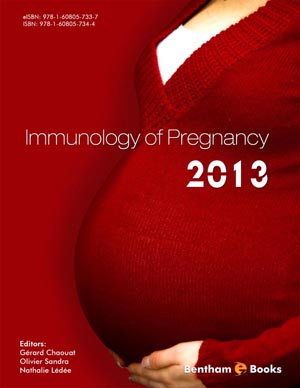Abstract
In a within-species mating of two histoincompatible individuals, the semiallogenic embryo may be ‘rejected’ by maternal defense mechanisms. In a danger environment, the more histoincompatible embryos survive due to activation of maternal immunoregulatory cells, particularly Foxp3+ Treg cells, which are present at the implantation site. The CD200 tolerance signaling molecule that is expressed by fetal trophoblast cells and by cells in decidua appears to play an important role in activating a variety of regulatory T cells, and in suppressing macrophage pro-inflammatory mediator production. CD200 may be present in a membrane bound and soluble form. Whilst αβ TCR+ CD4+ Treg cells may be generated and activated in situ via maternal antigen-presenting cells in decidua, at and shortly after the time of implantation, CD8+ Ts appear important and these may infiltrate to the surface of the implanting embryo and produce soluble FGL2 (fibroleukin) in response to direct recognition of embryonic Class I MHC + peptide molecules; soluble FGL2 may act via FcγRII to suppress inflammation and immune cell activation. Although cytokines such as fibroleukin may arise.
Keywords: Pregnancy immunology, regulatory T cells, fibroleukin/FGL2, CD200/OX-2, CD200 receptors, implantation, spontaneous abortion, occult pregnancy loss, placenta, animal models, endotoxin, lipopolysaccharide, stress, antigen presenting cells, gamma-delta T cells, cytokines, T suppressor cells (Tr1, Th3), IDO (indoleamine 2, 3-dioxygenase), Fc receptors, major histocompatibility complex.






















